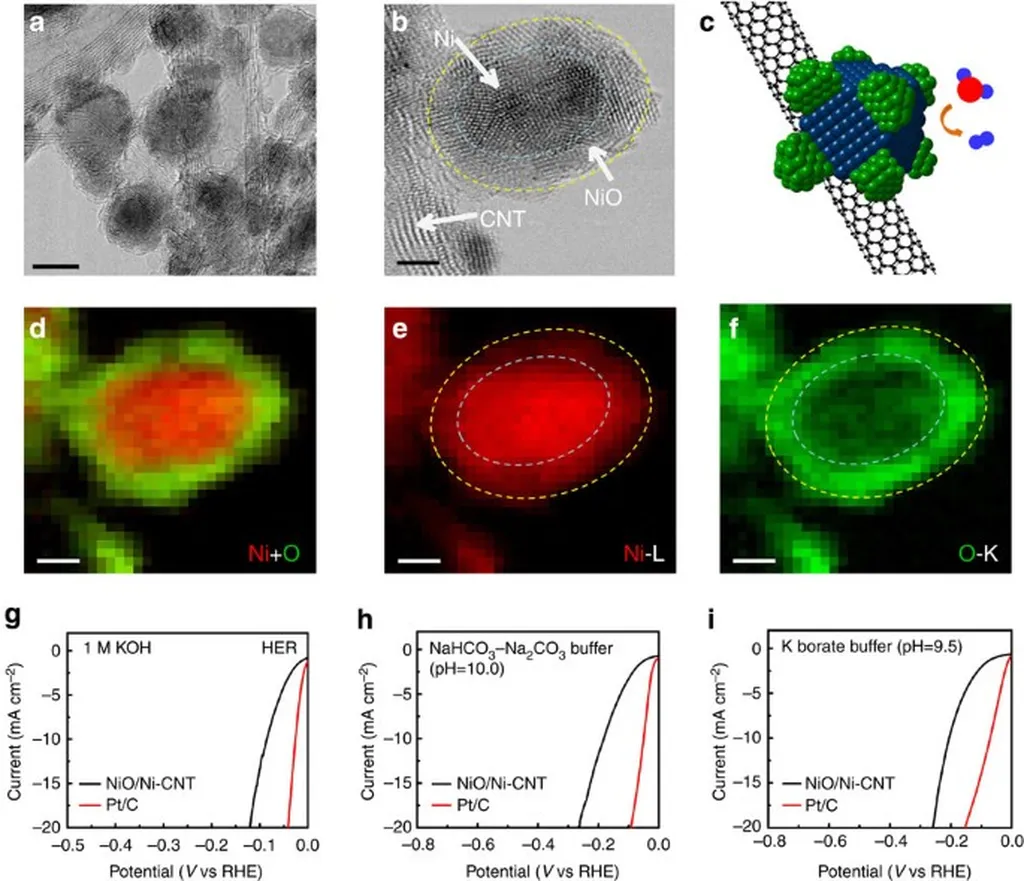In the heart of Kerala, India, a team of researchers led by R. P. Neethu from the Department of Physics at University College has been delving into the fascinating world of nickel oxide nanoparticles, and their findings could have significant implications for the energy sector. Their work, recently published in the journal *Discover Materials* (translated from the original title in another language), sheds light on how temperature and defects can modulate the electrical conductivity and dielectric behavior of these tiny particles, opening up new possibilities for energy storage and catalytic applications.
Nickel oxide (NiO) is a well-known semiconductor material, but its behavior at the nanoscale has remained a mystery until now. Neethu and her team synthesized nanostructured NiO samples with particle sizes ranging from 32 to 45 nanometers using a simple chemical method. They discovered that the samples contained a small amount of Ni2O3, which decreased as the annealing temperature increased. “This was an intriguing finding,” Neethu explains. “It suggested that the defects in the material were playing a crucial role in its properties.”
The team used a technique called Williamson-Hall analysis to study the microstrain in the samples, which is a measure of the imperfections in the crystal lattice. They found that vacancies, or missing atoms in the lattice, were a significant contributor to the microstrain. This is where things get interesting for the energy sector. Vacancies can act as traps for electrons, which can then hop from one vacancy to another, creating a flow of electrical current. This process, known as correlated barrier hopping, is what the team used to model the AC conductivity and dielectric behavior of the NiO samples.
The results were striking. The conductivity of the NiO samples was found to be 3-6 orders of magnitude higher than that of NiO single crystals. “This is a huge difference,” says Neethu. “It suggests that the nanostructured NiO could be a much more efficient material for conducting electricity.” The team also found that the activation energy, which is the energy required for the electrons to hop from one vacancy to another, decreased with increasing frequency and temperature. This is due to the increased concentration of uncompensated Ni2+ vacancies, which provide more pathways for the electrons to flow.
The dielectric response of the samples also indicated carrier-dominated dielectric behavior, which is characterized by a high concentration of hopping charge carriers. This means that the material can store and release electrical energy very efficiently, making it ideal for use in energy storage devices such as supercapacitors.
So, what does this all mean for the energy sector? Well, the defect-rich structure of nanostructured NiO, with its tunable properties, makes it a promising candidate for a range of applications. “We believe that this material could be used in catalytic applications, energy storage, and supercapacitors,” says Neethu. “Its high conductivity and efficient energy storage capabilities make it a very attractive option for these fields.”
The team’s findings, published in *Discover Materials* (translated from the original title in another language), provide a solid foundation for future research in this area. As we strive to develop more efficient and sustainable energy technologies, materials like nanostructured NiO could play a crucial role in shaping the future of the energy sector. The work of Neethu and her team is a testament to the power of fundamental research in driving technological innovation.

